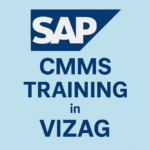
advanced java course in vizag
Learn Advanced Java
Learn the basics of parallel and concurrent programming, servlets, and sockets in this advanced Java course.
About this course
Advance your Java programming skills with this course designed to take your expertise to the next level. Learn techniques, frameworks, and APIs that enable you to write efficient, scalable, and clean code. Explore advanced topics like parallel programming, servlets, and database integration for robust application development.
Skills you’ll gain
-
Implement parallel and concurrent programming
-
Build web applications using servlets
-
Perform database operations with JDBC and SQL
-
Communicate using sockets for client-server interactions
-
Leverage Java Native Interface (JNI) to integrate other programming languages
Syllabus
advanced java course in vizag
Welcome to Learn Advanced Java!
Welcome to Learn Advanced Java!
Parallel and Concurrent Programming
Dive deeper into parallel and concurrent programming in Java.
Threading Refresher
advanced java course in vizag
Learn about servlets in Java.
Sockets
Learn how to make comprehensive programs using sockets in Java.
Java Native Interface (JNI)
Learn about Java Native Interface and how you can combine it with C++ to build powerful programs. advanced java course in vizag
Java Database Connectivity (JDBC)
Learn about Java Database Connectivity and how you can use it with SQL to create powerful programs.
What is Advanced Java?
Advanced Java refers to the specialized features of Java used for building enterprise-level, networked, and database-driven applications.
While Core Java covers the fundamentals (OOP, collections, I/O, threads), Advanced Java is about web technologies, frameworks, APIs, and enterprise tools.

🔹 Key Areas of Advanced Java
1. JDBC (Java Database Connectivity)
-
Connect Java applications with databases.
-
Perform CRUD operations (Create, Read, Update, Delete).
-
Commonly used with MySQL, Oracle, PostgreSQL.
2. Servlets & JSP
-
Servlets → Java classes handling HTTP requests and responses.
-
JSP (Java Server Pages) → Dynamic HTML generation using Java code.
-
Used to build web applications.
3. JSTL & EL
-
JSTL (JSP Standard Tag Library) → Provides tags for common web tasks.
-
EL (Expression Language) → Simplifies data access in JSP.
4. Frameworks
-
Spring Framework → Enterprise applications, dependency injection.
-
Spring Boot → Simplifies app setup, great for microservices.
-
Hibernate / JPA → Object-Relational Mapping (ORM) for databases.
5. Web Services
-
RESTful APIs → Lightweight web services using JSON.
-
SOAP → XML-based web services (used in legacy systems).
6. Enterprise Features
-
EJB (Enterprise Java Beans) for distributed apps.
-
JMS (Java Message Service) for messaging.
-
JavaMail API for sending/receiving emails.
🔹 Advanced Java Ecosystem
-
Build Tools → Maven, Gradle
-
Testing → JUnit, Mockito
-
Logging → Log4j, SLF4J
-
Version Control → Git & GitHub
🔹 Why Learn Advanced Java?
✅ Build real-world enterprise apps
✅ Work with databases & servers
✅ Master frameworks used in the industry
✅ Become job-ready as a Java Full-Stack / Backend Developer
👉 Do you want me to create a visual infographic-style image that explains Advanced Java (like a mindmap: Core → JDBC → Servlets → Spring → Hibernate → APIs)? That will make it much easier to remember. advanced java course in vizag
Advanced Java – Detailed Breakdown
1. Networking in Java
Advanced Java expands into network programming, allowing apps to communicate over the internet.
-
Sockets & ServerSockets → Build chat apps, file transfer systems.
-
URL & HttpURLConnection → Fetch data from APIs/websites.
2. Multithreading & Concurrency (Advanced)
While Core Java covers basic threads, Advanced Java uses:
-
Executors & Thread Pools → Efficiently manage large tasks.
-
Fork/Join Framework → Divide tasks into subtasks (parallel computing).
-
Java Concurrency API → Locks, Semaphores, Synchronizers.
3. J2EE (Jakarta EE now)
Java Enterprise Edition expands Core Java into enterprise solutions. It includes:
-
JSP & Servlets (Web layer)
-
EJB (Enterprise JavaBeans) (Business logic)
-
JMS (Java Messaging Service) (Message-based communication)
-
JTA (Java Transaction API) (Database transactions)
4. Spring Framework Ecosystem
Most enterprise companies use Spring. Key modules:
-
Spring Core → Dependency Injection & Inversion of Control.
-
Spring MVC → Web applications with controllers, views.
-
Spring Boot → Simplified setup for microservices & REST APIs.
-
Spring Security → Authentication & authorization.
-
Spring Data JPA → Easy database integration.
5. Hibernate & ORM (Object-Relational Mapping)
-
Map Java objects to database tables.
-
Replace raw SQL with HQL (Hibernate Query Language).
-
Handle transactions, caching, and relationships easily.
6. Microservices with Java
-
Spring Boot + Spring Cloud → Build scalable microservices.
-
Service registry (Eureka), API Gateway, Config Server.
-
Communication via REST or message brokers (Kafka, RabbitMQ).
7. Build & Deployment Tools
-
Maven/Gradle → Project build, dependency management.
-
Docker & Kubernetes → Containerization and orchestration.
-
CI/CD pipelines (Jenkins, GitHub Actions).
8. Testing in Advanced Java
-
JUnit 5 → Unit testing.
-
Mockito → Mocking dependencies.
-
Selenium → Automated web app testing.
9. Real-World Applications of Advanced Java
-
E-commerce websites (Amazon-like systems)
-
Banking apps (secure, transactional systems)
-
Enterprise ERP & CRM software
-
Social networking platforms
-
Healthcare & Finance management systems
🔹 Suggested Learning Path
-
Core Java Refresh → OOP, Collections, I/O, Threads
-
JDBC + Database Integration
-
Servlets + JSP (build a small web app)
-
Spring & Hibernate (enterprise-grade apps)
-
REST APIs & Microservices
-
Testing + Deployment
-
Build 2–3 projects to showcase in portfolio



 Previous Post
Previous Post Next Post
Next Post
